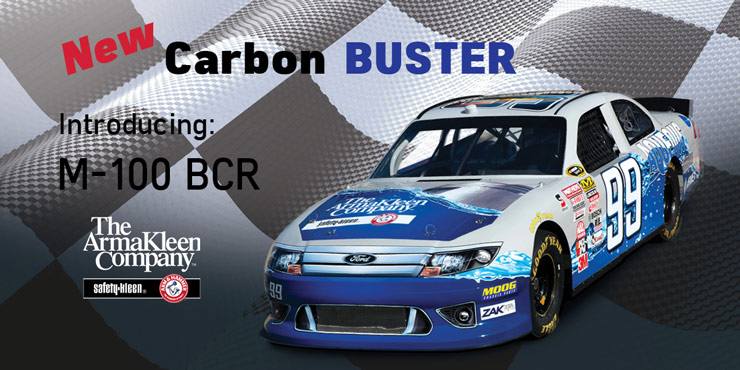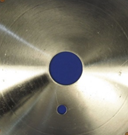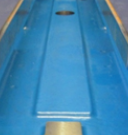ARMAKLEEN™ M-100 BCR Tackles Baked-On Carbon and Brightens Metal Too
 Ultrasonic washing, abrasive blasting and other techniques that remove baked-on carbon from automotive or industrial parts composed of steel alloys are not applicable typically to aluminum parts. Just one hour in an ultrasonic washer can result in deformation – namely starring and spiderwebbing – of the relatively soft aluminum surfaces, undermining aesthetic appeal as well as function. Most abrasive blasting utilizes hard abrasives, which is costly, can be labor intensive and may also damage parts made with aluminum alloys or other soft metals.
Ultrasonic washing, abrasive blasting and other techniques that remove baked-on carbon from automotive or industrial parts composed of steel alloys are not applicable typically to aluminum parts. Just one hour in an ultrasonic washer can result in deformation – namely starring and spiderwebbing – of the relatively soft aluminum surfaces, undermining aesthetic appeal as well as function. Most abrasive blasting utilizes hard abrasives, which is costly, can be labor intensive and may also damage parts made with aluminum alloys or other soft metals.
The best option is the most ubiquitous solvent – water – with ARMAKLEEN™ M-100 BCR, an alkaline aqueous cleaner. M-100 BCR removes baked-on carbon without the large mechanical energy cost incurred by ultrasonic washers. While the cleaning process may take a little longer to complete, treatment with M-100 BCR imparts additional benefits such as brightening of aluminum and the addition of temporary indoor rust protection for steel surfaces during storage and between operations.
M-100 BCR is formulated to remove baked-on carbon and other heavy soils from steel and soft metals like cast aluminum engine blocks and other aluminum alloy components. It can simultaneously clean steel, aluminum, copper and brass.
The alkaline pH of M-100 BCR also ensures grease and oil removal by surfactants, which work to lower the surface tension and enhance the solubility of contaminants. However, while considered to be an alkaline solution, M-100 BCR is a caustic free cleaner meaning it cleans as well or better than other caustic cleaners without damaging the substrate. M-100 BCR has a pH range of 9.8-10.0 at the recommended 10 percent solution. Designed for use in immersion, ultrasonic and spray wash applications, M-100 BCR is super-concentrated to be used at half of the concentration of normal single purpose cleaners.
The alkaline nature of the typical aqueous process can prove corrosive to aluminum, so corrosion inhibitors are added to M-100 BCR. These protect the parts being cleaned as well as the cleaning equipment.
Bubbles created throughout the entire cleaning cycle are normal and a necessary part of the cleaning process. Foaming surfactants are added to generate the bubbles and, in turn, may require inclusion of additional de-foaming agents particularly in spray wash applications. However, M-100 BCR will not foam in spray applications at temperatures as low as 110° F.
With volatile organic carbon (VOC) levels of about 7.5 g/L, M-100 BCR assures compliance with the 25 g/L VOC SCAQMD regulations at use concentrations up to 30 percent cleaner in solution.
The performance merits of M-100BCR are numerous. It exceeds the performance of caustic cleaners without damaging the substrate; simultaneously cleans steel, aluminum, copper and brass; provides short term indoor rust protection; and is safe for workers and the environment.
- Log in to post comments




